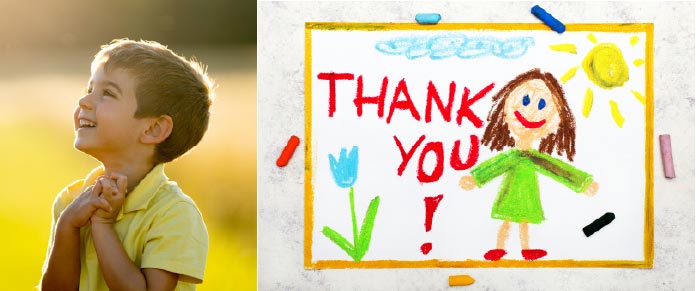Educator Julia Knight shares her thoughts on how the simple act of giving thanks can have positive life-changing effects.
We talk about wellbeing in schools and one way to help students become more mindful is by practising the art of happiness – gratitude.
Studies have shown that giving gratitude can make you happier. Harvard Medical Journal reported that positive psychology research found gratitude to be strongly and consistently associated with greater happiness. It said that gratitude helps people feel more positive emotions, relish good experiences, improve their health, deal with adversity, and build strong relationships. So, this makes an ideal scenario for schools to build into their timetables.
Interestingly, the effects of gratitude are far reaching as Dr. Robert A. Emmons of the University of California, Davis, and Dr. Michael E. McCullough of the University of Miami found out when they conducted research on gratitude. They asked participants to write a few sentences each week, focusing on particular topics and then studied the effects.
One focus group wrote about things they were grateful for that had occurred during the week. A second group wrote about daily irritations or things that had displeased them, and the third wrote about events that had affected them (with no emphasis on them being positive or negative). After 10 weeks, the psychologists found that those who wrote about gratitude were more optimistic and felt better about their lives.
 An interesting find was that those who were more grateful visited the doctor less than the other groups. The health benefits of practising gratitude are enormous as children grow and develop. Healthy habits that are carried into adolescence and beyond create a much healthier society.
An interesting find was that those who were more grateful visited the doctor less than the other groups. The health benefits of practising gratitude are enormous as children grow and develop. Healthy habits that are carried into adolescence and beyond create a much healthier society.
Practising gratitude is the butterfly effect in action. The butterfly effect is the idea that one small change can have wide and lasting consequences.
When applied to a school context, gratitude has an amazing effect on shifting the way in which children and students speak to each other and also themselves.
At the school I work with, we cultivate kindness and gratitude in many ways. Our children write ‘Thank You’ notes, and we encourage our students to be thankful and to contemplate who and what they are grateful for. This is a really positive activity and children love to read what their friends say about them.
‘Say Something Nice Day’ is observed annually to encourage staff and students to say something positive about each other in messages that are delivered throughout the school. It really lifts the spirits of staff and is a simple way to improve wellbeing and happiness across the school campus.
Schools and parents can encourage older students to keep a gratitude journal and make it a habit to collect and focus on the nice things that happen throughout the day. Parents can also ask their children what the best bit about their day was. This helps children to relive the positive experiences and create the connections that in turn keeps the serotonin (the happy hormone) level high.
 Many schools have introduced mindfulness meditation into their day and this involves focusing on the present moment. A simple breathing technique readies the children for the next lesson while keeping them calm, as opposed to bells or buzzers to signal change between sessions. This can be done at home too; parents can ask their children to focus on something positive like the warmth of the sunshine, or a person or place that makes them happy.
Many schools have introduced mindfulness meditation into their day and this involves focusing on the present moment. A simple breathing technique readies the children for the next lesson while keeping them calm, as opposed to bells or buzzers to signal change between sessions. This can be done at home too; parents can ask their children to focus on something positive like the warmth of the sunshine, or a person or place that makes them happy.
Gratitude is not about forcing children to be happy or to pretend to be happy. It is a resilience building tool that even on dark days, there will be something positive to focus on and that is the art of happiness.
Julia Knight has been teaching for 18 years in London, Bangkok and, is now a principal in Bahrain. She writes for many education magazines worldwide and offers teacher training and consultancy. You can follow her on Twitter @KnightWilliams.


































